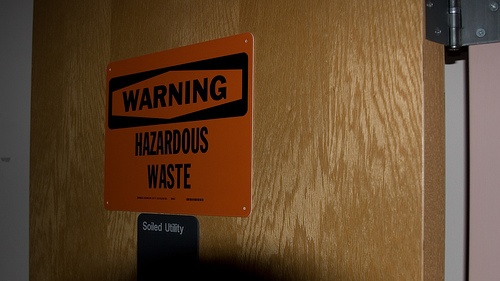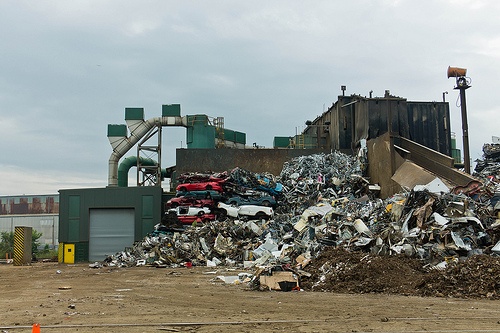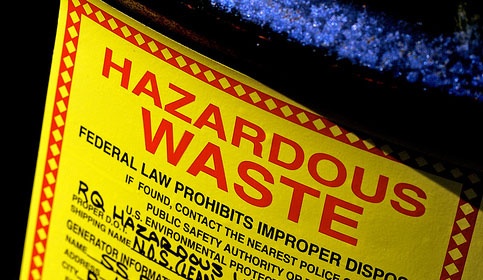The U.S. Environmental Protection Agency (EPA) administers rules governing the import and export of hazardous waste regulated by the Resource Conservation and Recovery Act (RCRA). These rules ensure that the U.S. meets its international responsibilities as a member of the Organization for Economic Cooperation and Development (OECD) by creating national rules that meet agreed-upon OECD standards.
Read MoreAudit, Compliance and Risk Blog
Tags: Environmental risks, Environmental, EPA, Greenhouse Gas, ghg, Hazcom
As the United States’ Presidential election lurches toward November 8, I wanted to summarize the two major candidates’ positions on environmental issues. Starting with Republican nominee Donald Trump, the first thing to observe is that his official candidate campaign webpage does not list ‘environmental’ as one of the major pull-down issues available for viewing. However, positions on environmental issues are presented in the policy areas that are addressed.
Read MoreTags: Environmental risks, Environmental, EPA
The World Decides To Help The Climate By Helping The Ozone Layer
Posted by Jon Elliott on Tue, Oct 25, 2016
Last month I blogged about basic provisions of the Montreal Protocol on Substances that Deplete the Ozone Layer, and ongoing negotiations to expand it to require phaseout of chemicals that harm the stratospheric ozone layer and contribute to climate change (click here, and included links to early blogs on Montreal Protocol issues). At that time, proposals all focused on hydrofluorocarbons (HFCs). At that point, global HFC use was increasing by roughly 10% annually, driven primarily by expanding use for air conditioning as hot developing countries sought to catch up with comfort levels in their developed counterparts. Proposed timelines and end-targets for reversing that expansion varied considerably.
Read MoreTags: Environmental risks, Environmental, EPA, ghg, climate change
U.S. Commission on Civil Rights Criticizes EPA’s Environmental Justice Efforts
Posted by Jon Elliott on Tue, Oct 18, 2016
In September 2016, the U.S. Commission on Civil Rights (Commission) issued its annual “Statutory Enforcement Report for 2016”; this year’s topic is the Environmental Protection Agency’s (EPA’s) efforts to protect and promote “Environmental Justice.” The Commission reviews decades of EPA efforts, and criticizes longstanding inadequacies.
Read MoreTags: Health & Safety, Environmental risks, Environmental, EPA, ghg, Hazcom, RCRA
To improve the efficiency of RCRA Corrective Action, in 2014, EPA Regions 3 and 7 began a pilot to implement RCRA Corrective Action using Lean process analysis with the goal of clarifying goals and expectations early in the process. The Lean process is a collection of principles and methods that focus on the systematic identification and elimination of non-value-added activity involved in producing a product or delivering a service to customers. Within the RCRA Corrective Action program, the Lean process was used to remove various redundant steps and frontload goals and expectations through a corrective action framework (CAF), resulting in significant time savings.
Read MoreTags: Environmental risks, Environmental, EHS, EPA, Hazcom, RCRA
The U.S. Environmental Protection Agency (EPA) regulates hazardous wastes under the Resource Conservation and Recovery Act (RCRA). These regulations include a detailed national system governing hazardous waste shipments from generators to offsite management facilities. In October 2012, RCRA was amended by the Hazardous Waste Electronic Manifest Establishment Act, authorizing EPA to implement a national electronic manifest system. In 2014, EPA adopted regulations to govern the new electronic system (I blogged about the rules here), but deferred compliance provisions (including specific electronic formats) while the agency continues to work on its data collection and management system.
Read MoreTags: Environmental, EPA, Hazcom, RCRA
U.S. and China Renew Climate Change Vows to Jumpstart Paris Agreement
Posted by Jon Elliott on Tue, Sep 27, 2016
In recent years, the United States and China have found a rare basis for cooperation in their joint efforts to accelerate international efforts to manage and reduce climate change. The first significant step in this cooperation was the two countries’ bilateral agreement in November 2014 to manage greenhouse gas (GHG) emissions within their boundaries (I blogged about it here). At the time, the two countries offered their commitments as a way to reinforce international climate change negotiations underway to replace the expiring Kyoto Protocol to the United Nations Framework Convention on Climate Change. In December 2015, those negotiations produced the Paris Agreement, which established global mechanisms for countries to declare self-enforcing national GHG management commitments (I blogged about the Paris Agreement here).
Read MoreTags: EPA, Greenhouse Gas, ghg, climate change
White House Guidance for Agency Consideration of Climate Change in Environmental Reviews
Posted by Jon Elliott on Tue, Sep 20, 2016
On August 2, the White House’s Council on Environmental Quality (CEQ) issued guidance to assist federal agencies in their consideration of the effects of greenhouse gas (GHG) emissions and climate change when evaluating proposed federal actions. I refer to this documents as “the Guidance” below.
Read MoreTags: Environmental risks, Environmental, EPA, Greenhouse Gas, ghg, climate change, CAA, CEQA
New Rules Tighten Greenhouse Gas Emission Standards for Heavy Duty Vehicles
Posted by Jon Elliott on Thu, Sep 15, 2016
The Clean Air Act (CAA) includes extensive regulatory requirements on “mobile sources,” which cover efficiency and emissions standards for a broad range of vehicles with internal combustion engines (automobiles, buses, aircraft), “nonroad engines and vehicles” (including lawnmowers, bulldozers and marine vessels), as well as motor fuel standards intended to promote cleaner burning fuels. The U.S. Environmental Protection Agency (EPA) uses CAA authority to set emission limits from engines, for CAA-regulated air pollutants, including carbon dioxide (CO2) regulated for its greenhouse gas (GHG) aspects.
Read MoreTags: California Legislation, Environmental risks, Environmental, EPA, Greenhouse Gas, ghg, climate change, CAA, Transportation
Extending the Montreal Protocol to Address Climate Change
Posted by Jon Elliott on Tue, Sep 13, 2016
The Montreal Protocol on Substances that Deplete the Ozone Layer provides the international framework for protecting the earth’s stratospheric ozone layer, by identifying and minimizing emissions of ozone depleting substances (ODSs). The original Montreal Protocol was initialed in September 1987 (I summarized it here). It is widely considered an effective example of international cooperation (I blogged about the healing of the “ozone hole” here), in contrast with ongoing struggles to reach binding international agreements to address climate change. In fact, during 2016 efforts are underway to build on the Montreal Protocol’s strengths by amending it to address additional chemicals that may harm ozone and contribute to climate change.
Read MoreTags: EHS, EPA, Greenhouse Gas, ghg, climate change










